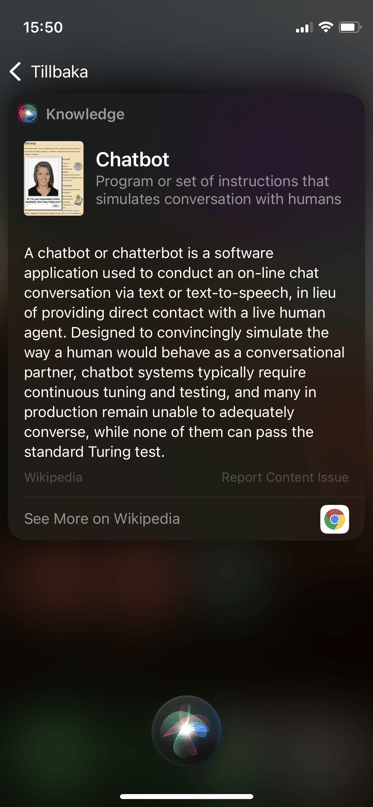Chatbots.
It sounds like the beginning from the title of a Star Wars parody film.
In the recent year, chatbots have become all-the craze within the tech and business community. The more that the technology and the capability of these artificially intelligent beings develop, the more their breadth for utilization develops.
Supply chain analysts and specialists are now looking into applying chatbots into supply chain management activities, including procurement activities. Supply chain management, as a market, has seen a plethora of disruptive technologies pop up in the past few years. The main challenge for supply chain management teams is to keep up with the digilization trends/emerging technology of supply chains, implement the technologies that are useful, and continuously develop their organization’s competencies for utilizing tech-aided work-tools.
Chatbots are just another blip on the large scoping radar of AI tech. Their utilization can already be seen in various capacities. One, which you may recognize is Siri; a chatbot with deep AI, and machine learning abilities that can answer questions, hold small conversations and understand patterns.
To understand the capabilities Chatbot technology holds for supply chain management functions, we must first build a better understanding of the technology. From there, we can develop an ideal of applicability in regards to procurement functions and other supply chain related activities.
What are chatbots, really?
Chatbots are an emerging form of AI (Artificial Intelligence) that could be the next big disruption for supply chain management tech.
In 2016 it was found that, “47% of supply chain leaders from our larger community believe that artificial intelligence is disruptive and important with respect to supply chain strategies” (Suppy Chain Digital).
The sudden surge in the want/need for chatbots, in various aspects of the business functions- along the value chain, is extremely interesting considering chatbot technology was a technology developed in the 1960’s. The bot was called ELIZA and its utilization was solely to attempt the psychoanalysis of humans (NBC News 2016). In the 60’s, of course, the applications of this technology weren’t even close to being realized. The stage of computers were still embryonic, and there was little thought of the world moving to the complete digital accessibility of private individuals that exists today.
Shifts in technology have created billions of tech users over thousands of miles of digitally connected networks, that we recognize today. This shift has eased business functionalities to end users, but also created a plethora of equally impactful disruptions, which has required adaption of businesses globally.
In the case of Bot’s, they began to be developed in the past few years to answer straightforward questions. For example; in order to receive a definition of the word “chatbot” I just asked Siri, “What is a chatbot?”
She delivered an answer with a definition that she had scrolled the web to find, and gave me the highest relevant answer her database found pertinent, which was from Wikipiedia.
Siri is hinting at the concept that chatbots are beginning to become applicable for customer service and information acquisition. These are two elements of the business value chain that have been widely dominated by person-to-person interaction, but are experiencing a shift to machine-to-person, and in some cases, machine-to-machine interaction.
 How Could We Use Chatbots in Supply Chain Management?
How Could We Use Chatbots in Supply Chain Management?
Applications of AI, more specifically chatbot technology, are in their infancy stages in the supply chain management field.
The technology has found it’s home in B2C functionalities such as customer service, but what about B2B, supply chain-based functionalities, such as, procurement?
Supply chain professionals and B2B tech companies, alike, realize that AI is a marketplace worth exploring as automation and computer assisted activity is required of businesses in order to stay competitive in today’s rapid and agile-global marketplace.
To start imagining the capabilities of chatbots in procurement functionalities, we need to devalue the elaborateness of the technology for a moment.
Chatbots, in essence, are digitally powered butlers.
Your wish is their command, and they live to serve. With that being said; the real question is: what can’t chatbots be utilized for procurement functions??
In an article by Bertrand Maltaverne, a procurement expert that has written extensively on this topic, an interaction was displayed between bot and human that would be the response of the AI technology after a natural disaster has occurred. This information collection, and display, is instantaneous and gives suggestive actions based on predictive analytics.
Some of the other application suggestions I have seen suggested are from a blog by Paul Smith,
“1. Chatbots will handle all cold calls. Just set up some rules and suppliers can speak to your chatbot instead of you. In fact, I guess that this will actually be a bot to bot conversation.
2. Bots will handle low value transactions. A user will just ask it to buy something and it will go off and make it happen. There is no value created by having a human placing purchase orders.
3. Bots will handle the paperwork, sending orders, chasing orders, dealing with invoices and payments. All dealt with without human intervention, only exceptions will be allocated to an actual person.
4. Your chatbot will find suppliers for you. Want to build a list of suitable suppliers? Let your bot go and research the market, ask questions of the suppliers and build a shortlist” (Smith 2016)
Of course, in order to realize these actions after giving your ‘procurement bot’ a task, the outcome would be completely contingent on the information that lies behind the outer shell of the bot. Without a robust compilation of big data and complex machine-to-machine backend development the bots wouldn’t have enough ‘brains’ to complete these sorts of tasks.
With that being said, chatbots will become a daily functioning digital aid to procurement professionals around the world.
How quickly that future is realized is completely dependent on the timeline, in which, preexisting procurement softwares, worktools and applications can implement bots to the front end UI of their technology, and develop a complex enough backend that can comprehend and assign requests from user-to-bot, bot-to-data base, and finally return the information (or task) back from bot-to-user.
We hope to delve deeper into the chatbot topic in the coming weeks, and lay out a few examples of how procurement teams have began utilizing the technology.
Until then, you can continue reading about Blockchain And How It's Reshaping Supply Chain Management.
Until next week.





